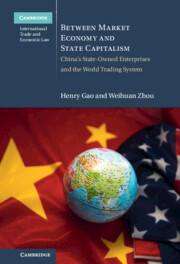 Between Market Economy and State Capitalism
Between Market Economy and State Capitalism Published online by Cambridge University Press: 10 November 2022
Chapter 2 traces the contours of China’s SOE reform since 1978. We divided the reform into five phases, where the first two phases focused on ensuring the survival of SOEs by granting them operational autonomies, first at the firm level and then at the managerial level. The third phase saw the adoption of corporatisation strategies for the ones deemed promising and privatisation of the ones deemed unviable. The fourth phase covered the first decade after China’s accession to the WTO, where the earlier trajectories continued, as we can see in the efforts to continue the market-oriented reform for SOEs with plans of commercialisation and modernisation. At the same time, a worrying trend also started to emerge when the government launched various campaigns to create national champions. This trend continued in the fifth phase as we entered the new era of ’Socialism with Chinese Characteristics’, where SOEs, strengthened by the previous rounds of reforms, started to squeeze out private firms in various forms. At the same time, the CPC also stepped up its efforts to enhance its influence in the SOEs by launching aggressive drives to build Party cells in these entities.
To save this book to your Kindle, first ensure [email protected] is added to your Approved Personal Document E-mail List under your Personal Document Settings on the Manage Your Content and Devices page of your Amazon account. Then enter the ‘name’ part of your Kindle email address below. Find out more about saving to your Kindle.
Note you can select to save to either the @free.kindle.com or @kindle.com variations. ‘@free.kindle.com’ emails are free but can only be saved to your device when it is connected to wi-fi. ‘@kindle.com’ emails can be delivered even when you are not connected to wi-fi, but note that service fees apply.
Find out more about the Kindle Personal Document Service.
To save content items to your account, please confirm that you agree to abide by our usage policies. If this is the first time you use this feature, you will be asked to authorise Cambridge Core to connect with your account. Find out more about saving content to Dropbox.
To save content items to your account, please confirm that you agree to abide by our usage policies. If this is the first time you use this feature, you will be asked to authorise Cambridge Core to connect with your account. Find out more about saving content to Google Drive.